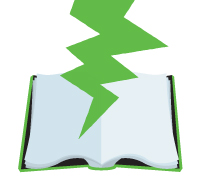
Indiana Humanities has curated a selection of talks by experts in the sciences and humanities on various themes related to Frankenstein. These scholars are ready to come to your community and share fascinating insights and ideas about this remarkable book!
Most of the talks are approximately one hour, with about 45 minutes of presentation and 15 minutes for Q&A. Some speakers may use A/V, others may bring props, lead workshops or even give performances.
As part of One State / One Story: Frankenstein, Indiana Humanities developed a Frankenstein Speakers Bureau full of intriguing talks about the contexts and themes of Mary Shelley’s groundbreaking work of science fiction. Hoosier scholars provided fascinating insights into the text, ranging in topics from cinema to climate change, philosophy to poetry, disability to dinosaurs and more!
Questions about how the Speakers Bureau works? Contact Megan Telligman, Frankenstein Program Manager at mtelligman@indianahumanities.org or at 317.616.9409.

